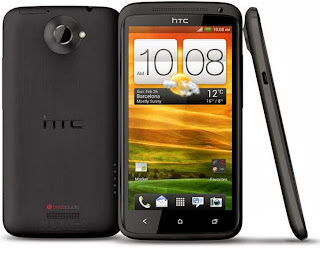Top 5: How my HTC One X sold me on Android
 |
| Thanks for everything buddy. Image: Talk Android |
5. Switching from a proprietary connector to the universal microUSB
This is a very small part of the phone, but to me it was a huge difference. iOS devices all share a proprietary connector, initially the 30-pin connector until Apple replaced it with a smaller Lightning connector on newer iOS devices. These cables only worked with iOS devices, so sharing with users of non-iOS devices was out of the question. If I didn't have an Apple cable with me, there was no way to charge my phone. Once I switched to the One X, I could use my friends' cables with my phone, and I could also lend my cables to friends as well. This is why it's so important that manufacturers abide by industry standards. It makes the life of consumers much easier, which is something I only came to appreciate once switching to Android.
| A small, but very important component. Image: GSM Arena |
Prior to buying the One X, I was under the impression that Android phones were "cheap". Both in terms of price and quality. I was a victim of Apple's reality distortion field and believed that Apple products were the most premium products in the market. But I can gladly say that to this day, 16 months after using my One X, it is still in perfect condition. Any scratches, dinks or scrapes are microscopic. I just gave my phone a once over and couldn't identify any flaws. 16 months without a case mind you. Something I would never dare do with an iPhone. I was then convinced that while there are "cheap" looking and feeling Android phones in the market, there are also many premium devices as well; the Xperia Z lineup, the Note 3, the Nexus 4, and of course, the One. Whoever says Android phones are all cheap and not premium like the iPhone doesn't know what they are talking about.
3. That beautiful display
Like I said earlier, I was trapped in Apple's reality distortion field. I believed that the Retina display was the best on the market, and Android didn't have an equivalent. I had never heard of any fancy names for displays on Android phones, so they must've been pretty ordinary. Boy was I wrong. The 720p S-LCD2 display on my One X is just beautiful. And Android phones have gone beyond that, with 1080p now the standard on flagship phones. And what about Apple's Retina display? 326 ppi for the past 4 generations of iPhones. The only
| No Retina, no problem. Image: Pocketnow |
Despite the fact that the iPhone is indeed a phone, it was pretty darn troublesome trying to get a ringtone onto the device. I had to download an app, trim my song of choice into a ringtone, save the clip, connect my phone to my computer (via iTunes), copy the song to my computer, and transfer it into the "ringtones" section of my phone via iTunes. On the One X? Open the song of choice in the Sense music app, trim to the desired ringtone, save, and apply as ringtone. How much easier is that? I can still remember how amazed I was at the ease of creating your own ringtones on Android (Sense) compared to iOS. While my previous three points highlighted the physical side of Android, this was the beginning of my love affair with Android as a mobile platform.
1. Swipe-to-wake (S2W)
My One X is rooted, running SlimBean and NCX kernel. One of the features of this kernel (and many others) is the S2W functionality. It allows me to wake my device and also lock it by swiping across the capacitive keys. Ever since I've used this feature, I've never had to press my power button. Upon discovering this, I was sold. Android is just so much more powerful than iOS, it's ridiculous. The S2W feature was also what sold me on the power of custom ROMs. I recently wrote a post on Google+ about why I think custom ROMs are better than OEM skins, and I'm saying it again here - custom ROMs are extentions of Android that truly showcase the power of the platform, without completely covering it up.
| More than just navigation buttons thanks to a custom kernel. Image: Droid Dog |



Comments
Post a Comment